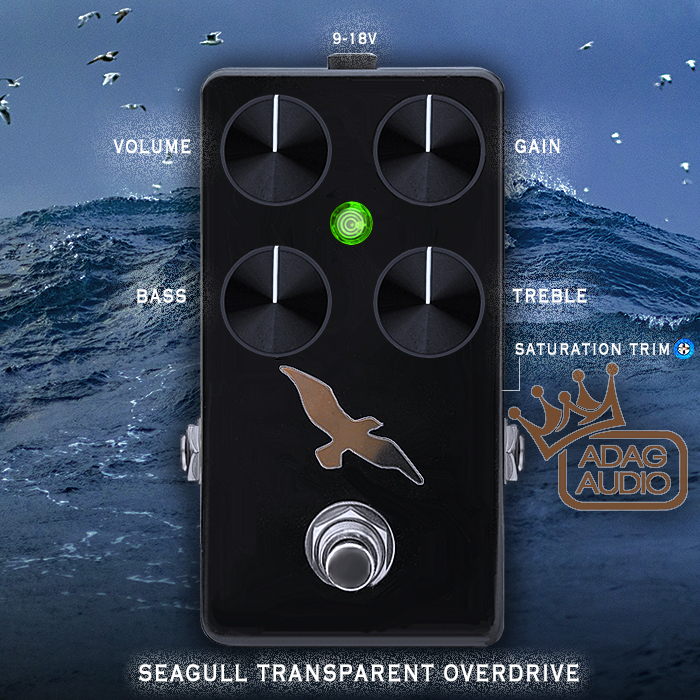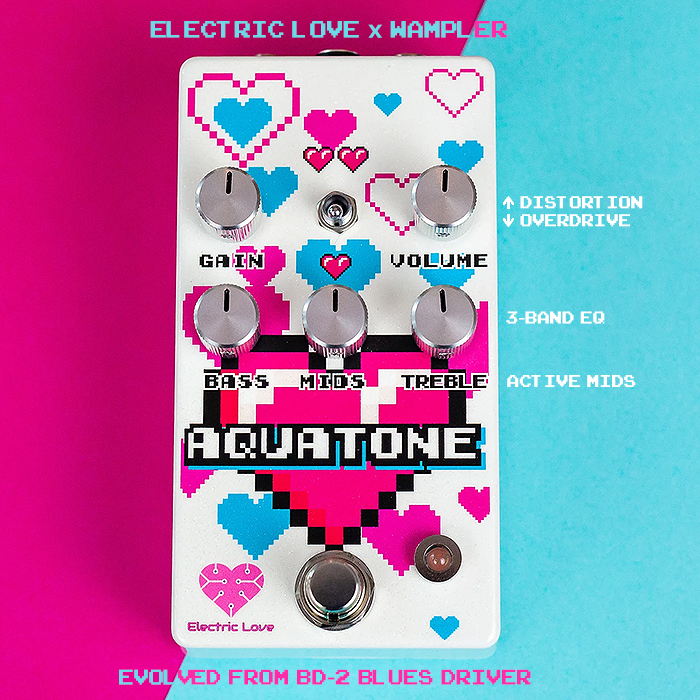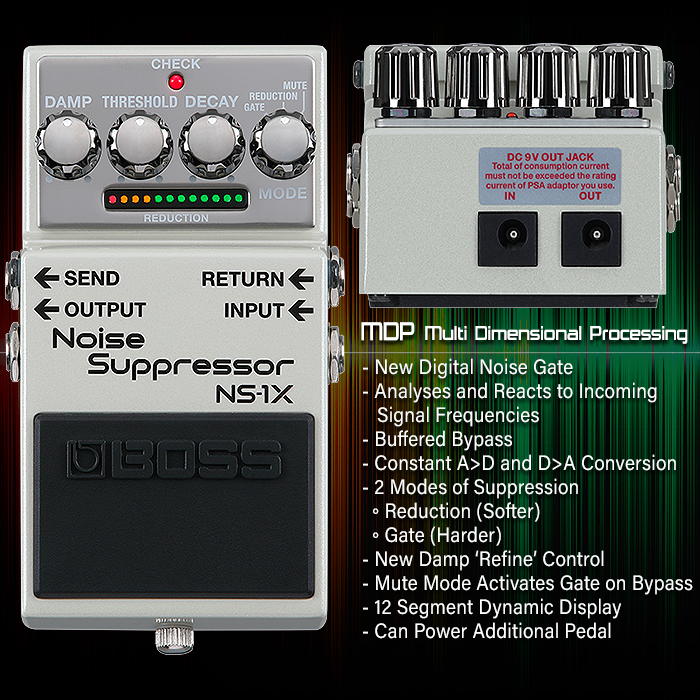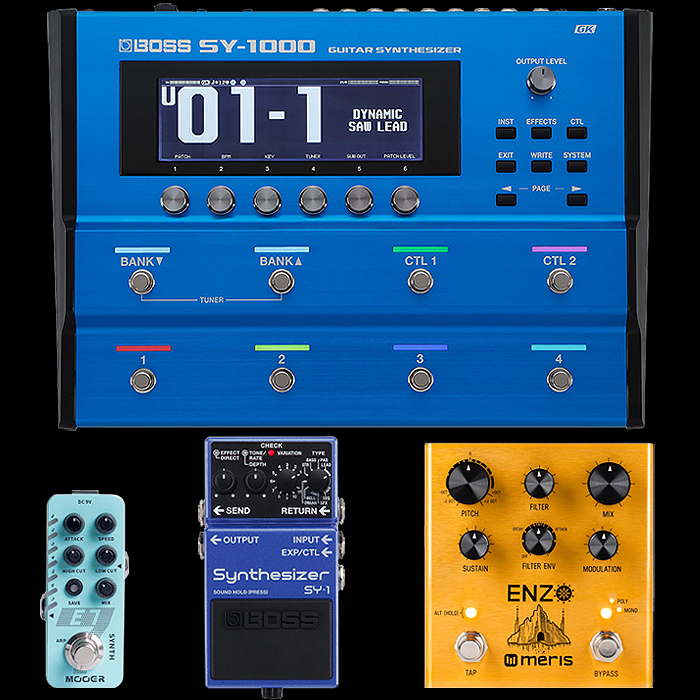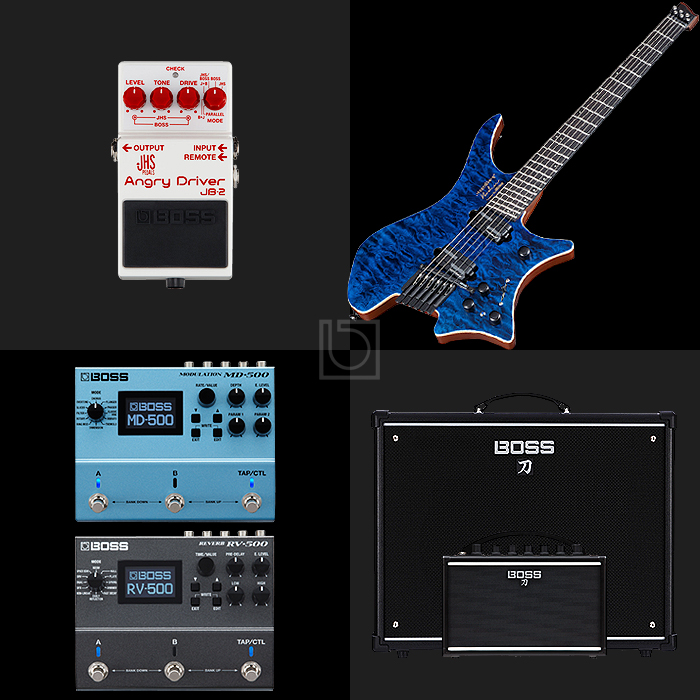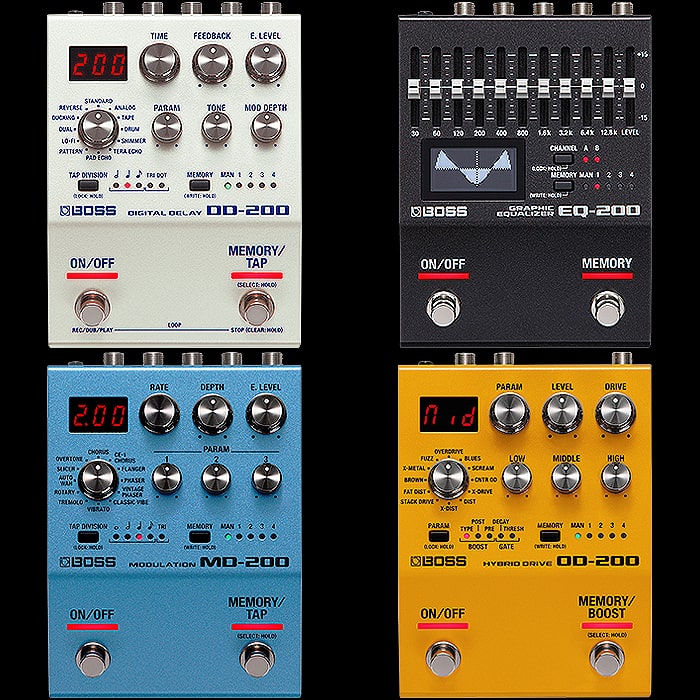Boss Celebrates the Launch of 10 Waza Craft Edition Pedals over the last 8 or so years

So back in around 2013 Boss made the smart decision to start reviving and reissuing some of its earlier pedal editions. The process involved selecting typically Series-2 analog pedals and re-engineering and hand-assembling those in Japan - with superior and more vintage parts.
Boss’s mainstay pedals were all initially built in Japan, but then production mostly moved to Taiwan, and more recently Malaysia - where all those standard and core pedals are mass-manufactured. By contrast - each Waza Craft Edition is largely assembled by a single person at a dedicated workstation. Each Waza pedal also has a ’Custom’ alternative voicing - often based on another classic Boss or Roland edition / variation of that circuit.
A number of the drive pedals have taken direct cues from the Keeley Modifications of those pedals - in particular the BD-2W and MT-2W - while the popular DS-1 Mod has not yet been targeted. The idea is obviously that you get more fidelity and dynamics in those Waza Craft editions - and typically more flexibility and versatility too versus the standard mass-manufactured editions..
I have included the OC-5 here too as a sort of pseudo or semi-waza edition - in a Honorary capacity. It of course does not fully qualify in being digital, and not made in Japan. But it does have that classic Waza Custom Mode type of thing - and the versatility and flexibility that typically comes with a Waza edition - so the OC-5 gets an honorary mention here as the closest pedal Boss have built to a Waza Edition standard.
I personally have 9 of these pedals featured here - obviously the FZ-2W is speculative. I do feel that we will get that at some stage - albeit fans will probably need to start up another petition to Boss - much in the same way as happened with the HM-2W. Based on the success of the TB-2W - we will almost certainly see more Fuzz variants, while the next in line may not necessarily by the much anticipated FZ-2W. Boss moves in mysterious ways and Yoshi Ikegami and gang always have their own agenda - which is typically not influenced by prevailing public opinions! The whole HM-2W consultative process was something very new and different for Boss - who historically have tended to work more in secret.
I hope the HM-2W will mean more of Boss reaching out to its audience and taking some influence and cues from them. There is a separate follow-up article to this where I speculate on the next likely Waza Craft reissues. A good guide in part to that is used prices on Reverb.com - which typically indicate the level of demand. I have picked out 6 possible examples - some fairly obvious and evident, while others rather more fanciful.
I’ve still to get the DM-2W and TU-3W - which I will probably get eventually for sake of set completion. While I tend to only deploy stereo delays in my rig, and use the Roadie tuner over and above any sort of tuner pedal. As my setup is entirely home-based I really don’t need to have a tuner in the chain - taking up a valuable slot!
Here then follow the essential salient details for each of these Waza Craft Editions and nearly ones! :
BD-2W Blues Driver Waza Craft Edition [2014] - $165 | €149 | £145
Original Blues Driver issued since 1995
This one is very obviously based on that Robert Keeley Phat Mod for its Custom Mode - where my favourite all-time overdrive is actually the Keeley Freak Fuzz Modded edition of that same pedal. The Boss Waza edition comes very close to that - albeit the Keeley variety has a little more beef and just a little more in the low end. The Waza variety is slightly more 'elegant' as such and will likely be many players' preferred option - while I find the extra body and beef of the Keeley varieties just a tiny bit more to my liking - but very close really. I of course have one of these! This utilises the TL071 IC chip.
SD-1W Super OverDrive Waza Craft Edition [2014] - $154 | €140 | £129
Original SD-1 issued since 1981
I somewhat wrongly thought at one stage that the Custom Mode here was more of an OD-1 voicing while it is rather more likely to have been inspired once more by the Keeley SD-1 Mod - which somewhat beefs up and adds body to that overdrive's output. Boss describes the Custom Mode simply as having more range and slightly more gain than the standard voicing. I've always wanted one of those 14-leg chip original OD-1's with the NEC UPC4741C chip - I do hope Boss will do another reissue of that as a Waza edition, for now I'm having to do with the admittedly excellent Pettyjohn ODI. The original SD-1's had NEC C4558C chips, with later versions using JRC4558DD and similar. I own this variety too.
DM-2W Delay Waza Craft Edition [2015] - $154 | €159 | £155
Original DM-2 issued 1981-1984
The classic DM-2 used the Panasonic MN3005 BBD chip originally, before switching to Panasonic MN3205 - while the BD-2W uses CoolAudio V3205SD chips - which are actually MN3205 replicas - which most contend don't sound exactly the same as the original ones - but are close enough. Standard mode gives you largely those same warm repeats - with 20 > 300 ms of delay time. While Boss describes the Custom Mode as having a clear, customized tone with an extended delay time.
CE-2W Chorus Waza Craft Edition [2016] - $206 | €199 | £189
Original CE-2 issued 1979-1992
The very first CE-1 Chorus used the Panasonic MN3002 BBD chips, the CE-2 then switched to MN3007, then MN3207 - which the most recently CoolAudio V3207D chips are based on. This is why there is still a lot of demand for those early pedals as the world has long since run out of those original BBD Chips which many say have more elegant dynamics than the later replicas. The CE-2W uniquely contains 3 different modes - Standard CE-2, and then 2 Custom Modes - CE-1 Chorus, and CE-1 Vibrato. I really love my CE-2W and it gets a fairly regular rotation - while I kind of prefer the elegant simplicity of the DC-2W.
VB-2W Vibrato Waza Craft Edition [2016] - $237 | €209 | £199
Original VB-2 issued 1982-1986
It took me a while to get into Vibrato - and it's thanks to Prince really that I persevered as he deployed the original pedal in lots of cool ways - and it was a significant part of his setup and sound. The original VB-2 used mostly Panasonic MN3207 chips - so presumably more of those CoolAudio replica V3207D chips. The custom mode ups the frequency range a touch which somewhat brightens up the modulation.
TU-3W Chromatic Tuner Waza Craft Editin [2016] - $154 | €139 | £139
Original TU-3 issued since 2009
This is essentially the much loved TU-3 Chromatic Tuner upgraded with superior quality parts and a different coloured display in a fetching blue. The improved components result in a cleaner signal path, although I'm not sure that the display is quite as legible as the standard edition - it looks very cool admittedly. It's a long time since I've had a Tuner in my pedal-chain - as I prefer to use the Roadie automatic tuning-peg tuner - version 2 actually - which I feel is slightly more ergonomic than the V3 - which does though have a better display and slightly more features onboard.
DC-2W Dimension C Waza Craft Edition [2018] - $257 | €199 | £199
Original DC-2 issued 1985-1989
Similar to the CE-2 I believe this one started off with Panasonic MN3007 BBD Chips before later switching to MN3207 and eventually the replica CoolAudio V3207D chips - as per the CE-2W and VB-2W. This is is probably my all-time favourite Chorus effect - and I slightly prefer it to the CE-2W. I also love its ease of use via those 4 push-buttons which you can of course deploy in pairs. The Custom Mode here is the vintage Roland SDD-320 Dimension D flavour - which is slightly stronger than the Standard DC-2 Mode. This pedal is most associated with Prince and Purple Rain - where the ideal setting is button 3 on the Custom Mode as far as I'm aware. Albeit some same button 3 on Standard Mode, while others prefer the slightly more subtle mode '2'!
MT-2W Metal Zone Waza Craft Edition [2018] - $154 | €135 | £129
Original MT-2 issued since 1991
The original MT-2 had 4 x Mitsubishi M5218AL IC chips, while later versions mixed in 1 and then 2 x NJM14558L chips for a sort of half-and-half approach, and with I assume is reflected in the latest MT-2W edition. I believe the Custom Mode here is once more inspired by a Robert Keeley Mod - where indeed his Twilight Zone Mod adds 3 beefier and increasingly gainier modes - while Boss sort of draws a best fit line through that. Note that the tone controls can be very sensitive - which is typically the issue the haters have with this pedal. While if you follow Biffy Clyro lead guitarist Simon Neil's example - you can get exceptional tones out of the MT-2 with just a little patience and due diligence. This is one of my favourite Metal distortion pedals of all time - and of course I like it as 'beefy' as possible. Much like with the BD-2W the Boss version tones it down a little from the original inspiration.
OC-5 Octave Octaver (Semi-Waza) [Honorary] [2020] - $134 | €129 | £119
Original OC-2 issued from 1982-2005
The original OC-2 editions had the preferred BA634 chip - which then changed to CD4013 around the mid-90's. I believe Boss originally considered an OC-2W reissue - as a more typical Series-2 revival. While work with the digital octave circuit had progressed to amazingly snappy levels of tracking - and the new OC-5 could feature a slightly extended featured set - including those smart low-string Range settings. There is much about the OC-5 that is waza-esque in approach. While this obviously cannot be a Waza Craft as it's digital, and made in Malaysia. I still feel it deserves an honorary place here as the closest other Boss pedal to Waza-Craft standard - obviously has that Standard/Custom Mode type of switch - here representing Vintage (OC-2) and Polyphonic Modes. Bass players still seem to prefer the original OC-2's to a degree - while I feel that the OC-5 is a better proposition for Guitar players.
TB-2W Tone Bender MKII Waza Craft Edition [2021] - sold out - $349 | €349 | £312
Original Sola Sound Tone Bender MKII issued from c1966-1976
I was mostly correct when I originally identified the 3 x Germanium transistors as 2N404 varieties. There's an excellent teardown video of this pedal by Gray Bench Electronics (at the base of my last TB-2W feature) - which showcases Boss's smart circuit design - with little silicon pedestals for those metal cans and individual bias trimmers for each of those too. This is a wonderful mix of new and old tech - and it sounds every bit as richly textured as the original inspiration. Of course congratulations to everyone who snagged one - looks like around 3,100 or so were made - looking at my own serial number.
HM-2W Heavy Metal Waza Craft Edition [2021] - $180 | €179 | £159
Original HM-2 issued from 1983-1992
I believe these are still using those core Mitsubishi M5218AL IC Chips. Lot of subtle updates and improvements over the original. As mentioned - where Standard Mode goes louder now with less hiss and fizz. While the Custom mode brings the thunder with a major extension on the range of those controls. I've always liked the HM-2 circuit - and I feel this refined version is the best one yet. As is usually my way - I tend to prefer the slightly beefier Custom Mode - which sounds superb. Admittedly there are a lot of HM-2 Clones out there and some have a lot more to them - like the Klirrton Grindstein. While I feel there is still much to love about the authentic Boss variety.
FZ-2W Hyper Fuzz Waza Craft Edition [202X?] - TBC
Original FZ-2 issued from 1993-1997
This is purely speculative - and while we may not get this as the very next Waza edition, I feel pretty certain we will see this eventually - especially after the success of the TB-2W. Boss obviously have their own agenda though and they've already likely decided on the running order well before the success of the TB-2W was clear. The Custom Mode could simply be more range on each of those dials and possibly a slightly different bias - as is often the case. For sure there is a captive and ready-made audience for that pedal - so no doubt Boss will see sense soon enough and plan another reissue!
Final Thoughts
I think I will probably complete this collection eventually - even though I'm unlikely to find much use for the two here that I've yet to get - the DM-2W Delay, and TU-3W Chromatic Tuner. All the other existing ones are present and correct in my reference collection and I make use of all of them on a regular rotation basis.
I love the two brand new ones - where otherwise my long-term favourites are the BD-2W, DC-2W and MT-2W - or a little bit of everything really. I will do a follow-up article as mentioned - where I speculate on the next most likely Waza editions - besides the likely FZ-2W - there is still a lot of demand for those classic analog modulations so we may well see a BF-2W to PH-2W possibly at some stage.
Would be good to have the readers thought here too - on what you like currently, and what you wish to be added. These pedals to me are really boutique-style in how they are engineered and made. Where typically each is assembled by one individual on a smart workstation. These are really more larger-batch manufacture than mass-market manufacture. As I see a few misguided comments around trying to unfairly denigrate these obviously high quality pedals.
Every Boss pedal features a number of smart innovations - as is very clear on the recent TB-2W - which does a lot of things a little bit differently than most - and in many ways has an extra level of attention to detail. Boss pedals are engineered and refined over lengthy and meticulously intricate R&D cycles - and these Waza Craft editions are certainly amongst the finest stompboxes to be found anywhere. The tolerances and build quality here is about as good as it can be - which is why Boss are still the world's favourite touring pedals - no other make is quite as robust or reliable!
I feel these are generally and genuinely well-priced for what is on offer and I really don't understand how anyone could be overly critical on any of these. They are very much high quality reissues of those legendary classics. And there's plenty more perfect candidates within Boss's legendary archive.









